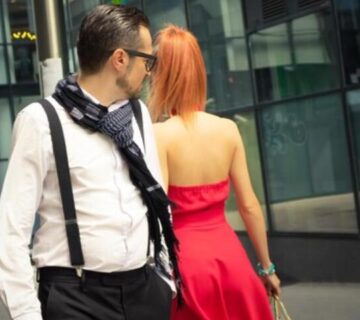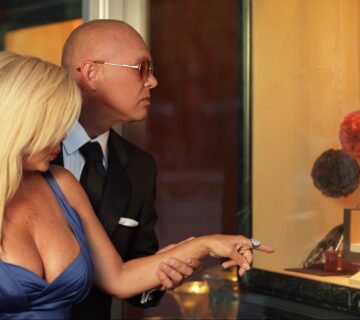Zoosk Maybe Option, wiping, matching, and messaging—online dating has its own language and etiquette. On Zoosk, one of the world’s largest dating platforms, a unique option often catches users’ eyes: the “Maybe” button. But what happens when you click “Maybe” on Zoosk? Is it just a softer “No,” or does it keep the door open for future romance?
What Is the “Maybe” Button on Zoosk?
On Zoosk, the “Maybe” option is feature prominently in its Carousel match system, which is design for fast, swipe-style browsing of singles based mostly on photos and basic details. When you use Carousel, you get three choices for each profile:
-
Yes: You’re interested in meeting this person.
-
No: Not interested, move along.
-
Maybe: You’re undecided—interested, but not ready to commit to a “Yes.”
The “Maybe” button is Zoosk’s answer to the common experience of seeing a profile that intrigues you, but about which you’re unsure due to limited info, hesitation, or simply needing more time to decide.
How Does “Maybe” Work in Zoosk Carousel?
-
Notifies the Other User: Selecting “Maybe” on someone in Carousel sends a notification to that person that you’re interested in potentially connecting—not unlike the “Yes” option. Both “Maybe” and “Yes” indicate openness to a future match; “No” removes that user from your Carousel queue.
-
Keeps Options Open: That profile might be stored in your “Maybe” list or factored into future SmartPick or Suggested Match algorithms, letting you revisit them later.
-
Informs Mutual Matching: If that user also selects “Yes” or “Maybe” on you, Zoosk notifies both of you that there’s a “Mutual Match.” This connection now appears in your “Connections” tab, enabling private messaging if you have a subscription.
-
No Commitment: “Maybe” doesn’t commit you to any specific course of action or notify the person you’re interest in them as strongly as “Yes,” but it is still a positive registration of interest.
User Experience: Why Would You Pick “Maybe” Instead of “Yes” or “No”?
-
Uncertainty: The “Maybe” is perfect for those profiles that are not instant swipe-rights, but you don’t want to reject outright.
-
Limited Profile Info: Sometimes you see only a photo and an age; clicking “Maybe” means you want to learn more before making up your mind.
-
Playing the Field: Not ready to commit to meeting or messaging, so you park the profile for later consideration.
-
Maximizing Your Chances: Since “Maybe” and “Yes” notify the other party, you get on their radar while staying noncommittal.
-
Algorithmic Learning: The more you interact, even with “Maybe,” the smarter Zoosk’s Behavioral Matchmaking™ gets about your true preferences.
What Happens Next? The Road From “Maybe” to Match
-
If the other user reciprocates with a “Yes” or “Maybe” for your profile, you become a Mutual Match—meaning both of you have at least some degree of interest.
-
Your connection is log in the “Connections” list, which acts as your shortlist for messaging and dating follow-up.
-
If you don’t reconnect or take further action, the match will eventually fade away—no pressure, no awkwardness.
How Does “Maybe” Affect Your Zoosk Experience?
For more successful matching:
-
Clicking “Maybe” is a proactive step that triggers Zoosk’s notification system and increases your overall engagement potential.
-
It provides flexibility for indecisive users, especially if you value quality over quantity in your connections.
-
Using “Maybe” helps the SmartPick algorithm refine future matches just like “Yes” or “No”—your digital dating “preferences” are always evolving.
Carousel vs. Search: What’s Unique About “Maybe”?
-
The “Maybe” option is exclusive to Carousel—you won’t find it in basic Search or Profile browsing, where you simply Like, Smile, Message, or Pass.
-
Carousel keeps Zoosk interactive and fast-paced, mixing the fun of swiping with the strategy of thoughtful choice.
Tips for Using “Maybe” Effectively on Zoosk
-
Don’t Overuse It: If you “Maybe” almost everyone, your connections will remain cluttered and the algorithm may get confuse.
-
Review Your Maybes: Check your “Maybe” list regularly, revisit profiles with more scrutiny, and decide when to upgrade to “Yes” or finally pass.
-
Follow Up on Mutual Matches: When someone “Maybe”s you back (or says “Yes”), take the initiative! Good conversations start with a little risk.
-
Keep Your Profile Strong: The more appealing your own info and photos, the more often others will “Yes” or “Maybe” you, improving your chances for quality mutual matches.
Does “Maybe” Mean the Same as “Yes”?
Zoosk Maybe Option, Technically, both “Maybe” and “Yes” initiate interest and send a notification, but “Yes” is a stronger, more decisive signal. “Maybe” is lighter—a holding pattern letting both you and the other user know there could be potential, but it’s not a committed choice. As such, the algorithm may weigh “Yes”s slightly higher when recommending matches.
Privacy and Safety Considerations
Using “Maybe” is as private as any other action on Zoosk: nobody knows if you said “Maybe” versus “Yes”—they just know you’re open to meeting, and only if they also express interest. Remember to always:
-
Avoid sharing personal details before trust is built.
-
Use Zoosk’s messaging system for initial conversations.
-
Review Zoosk’s safety tools, including blocking and reporting.
Read More: Zoosk Invisible Browsing: How to View Profiles Without Being Seen (2025)
Conclusion
Zoosk Maybe Option, Clicking “Maybe” on Zoosk signals that you’re intrigu but not fully decide, puts you on a user’s radar, and keeps the door open for future interaction. It’s a useful feature in Zoosk’s Carousel matching, combining modern swipe-style speed with thoughtful dating strategy. By using “Maybe” wisely, reviewing your matches, and balancing fun with security, you’ll set yourself up for more meaningful connections and less dating fatigue.







[…] Read More: Zoosk Maybe Option Explained – The 2025 Complete Dating Guide […]